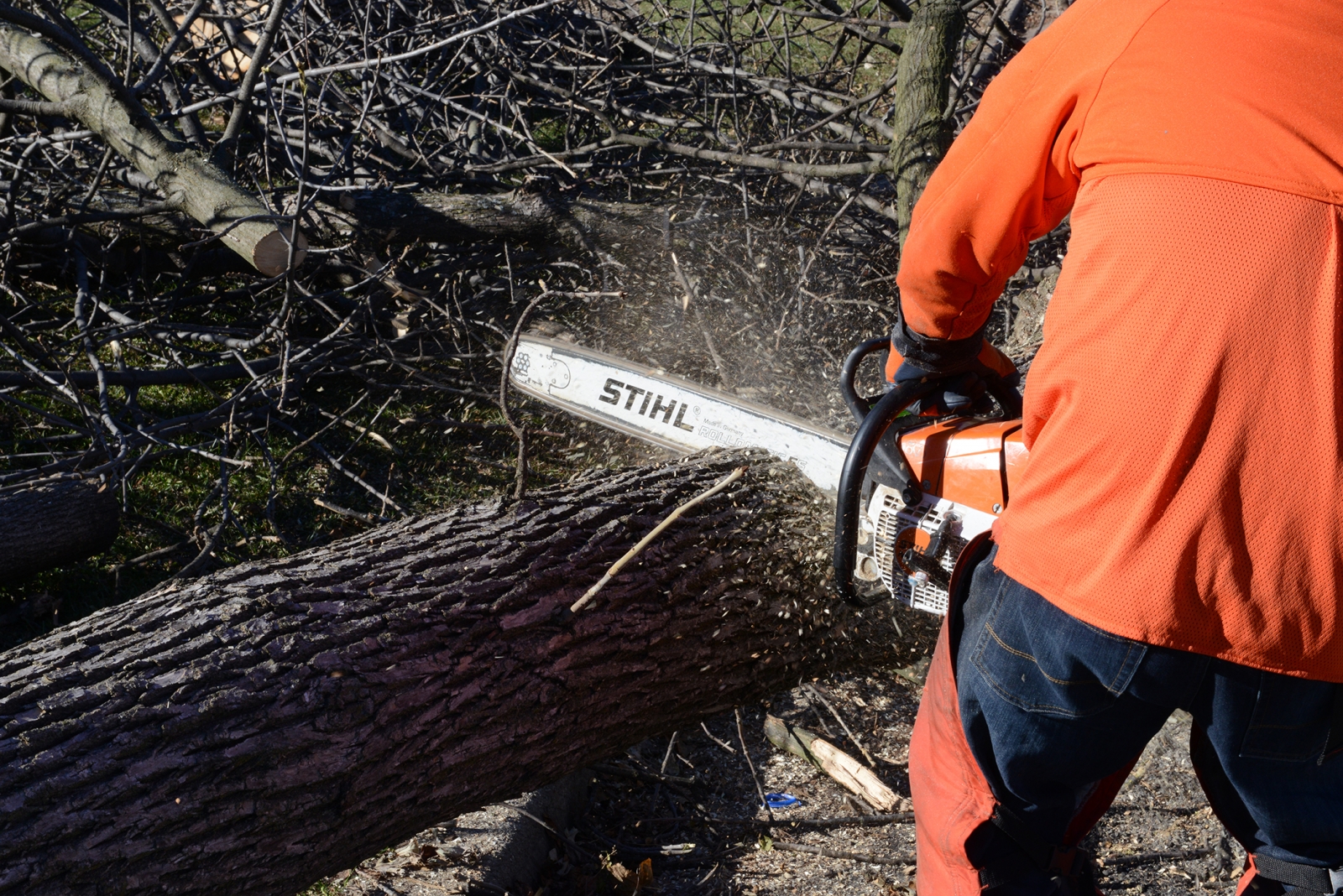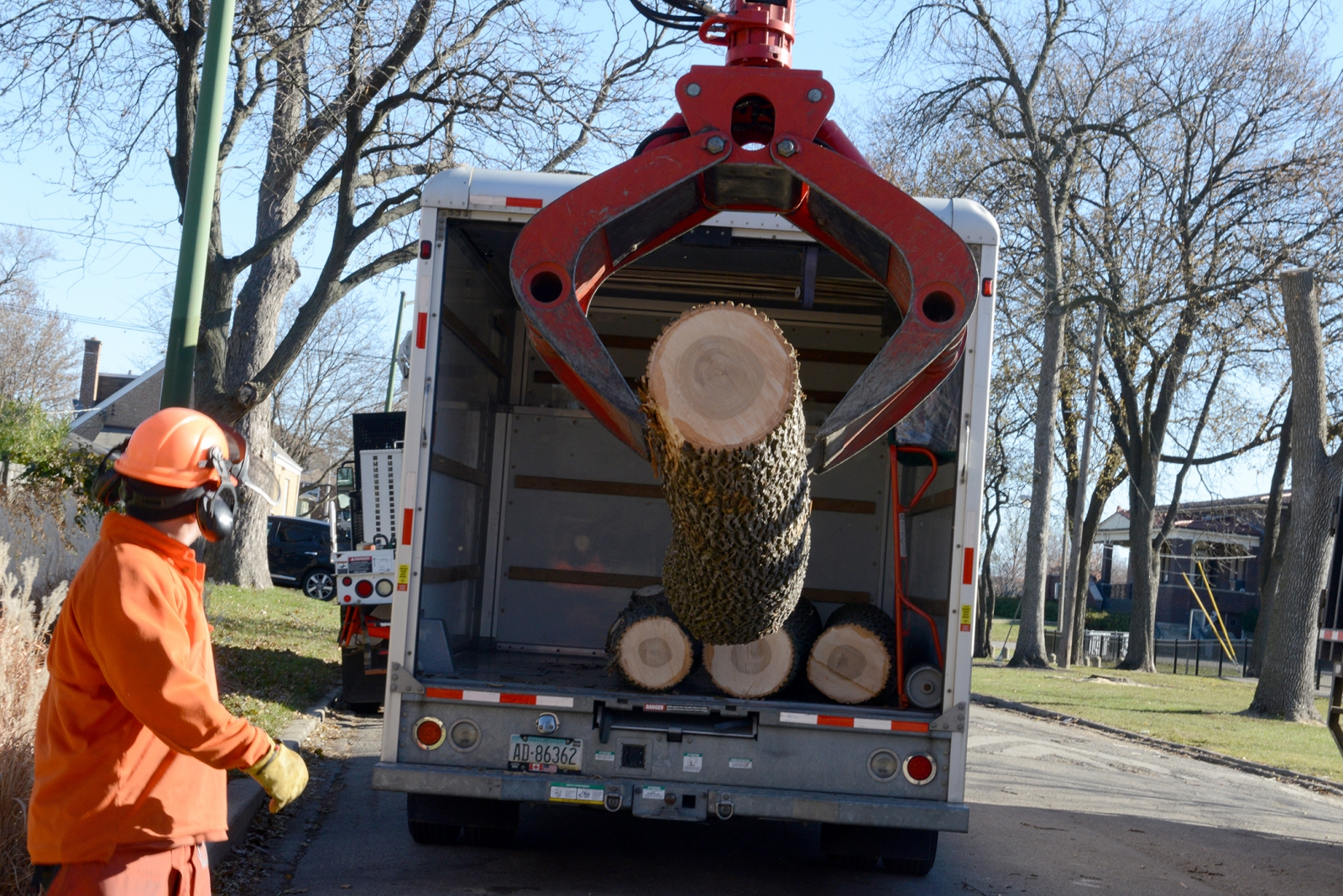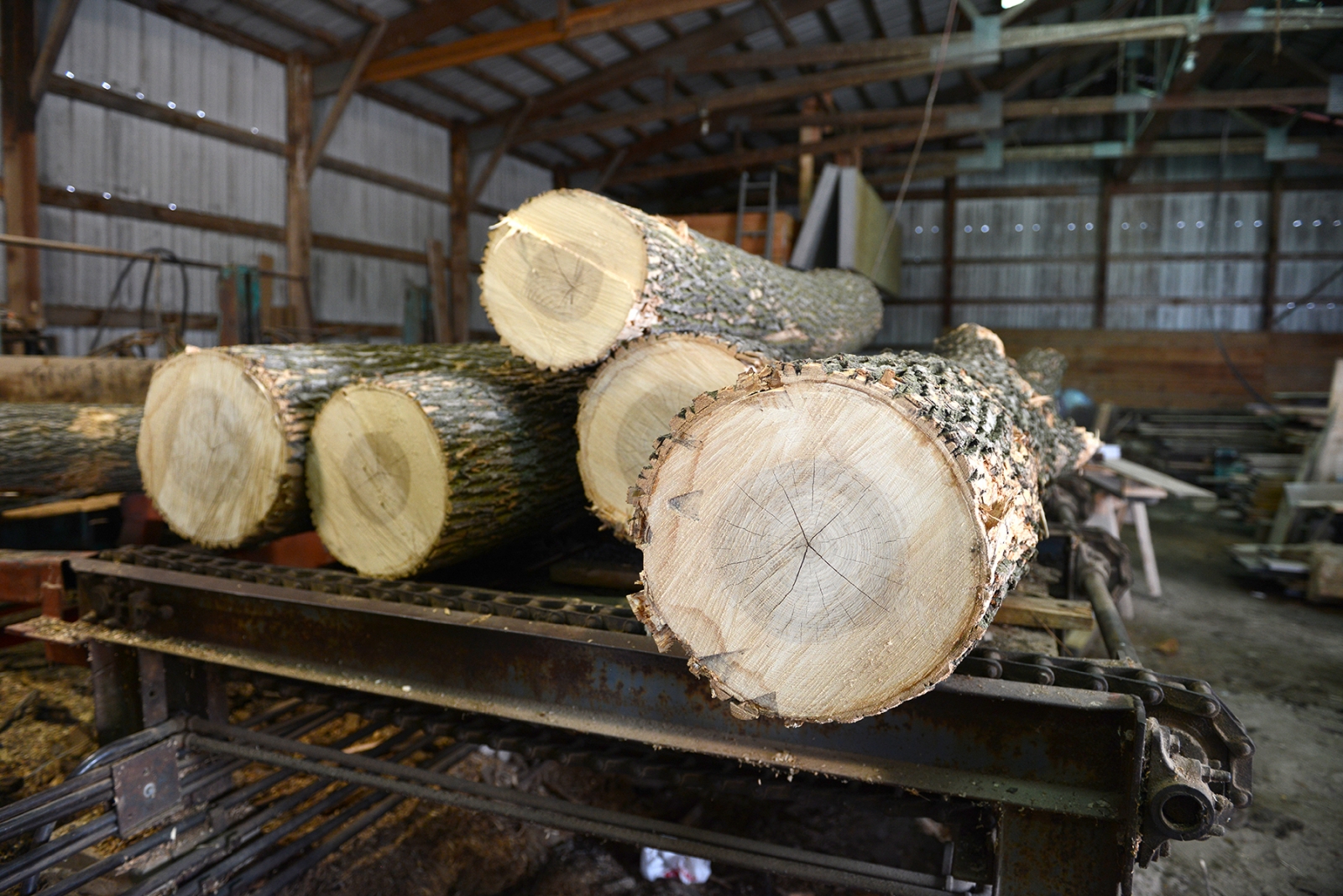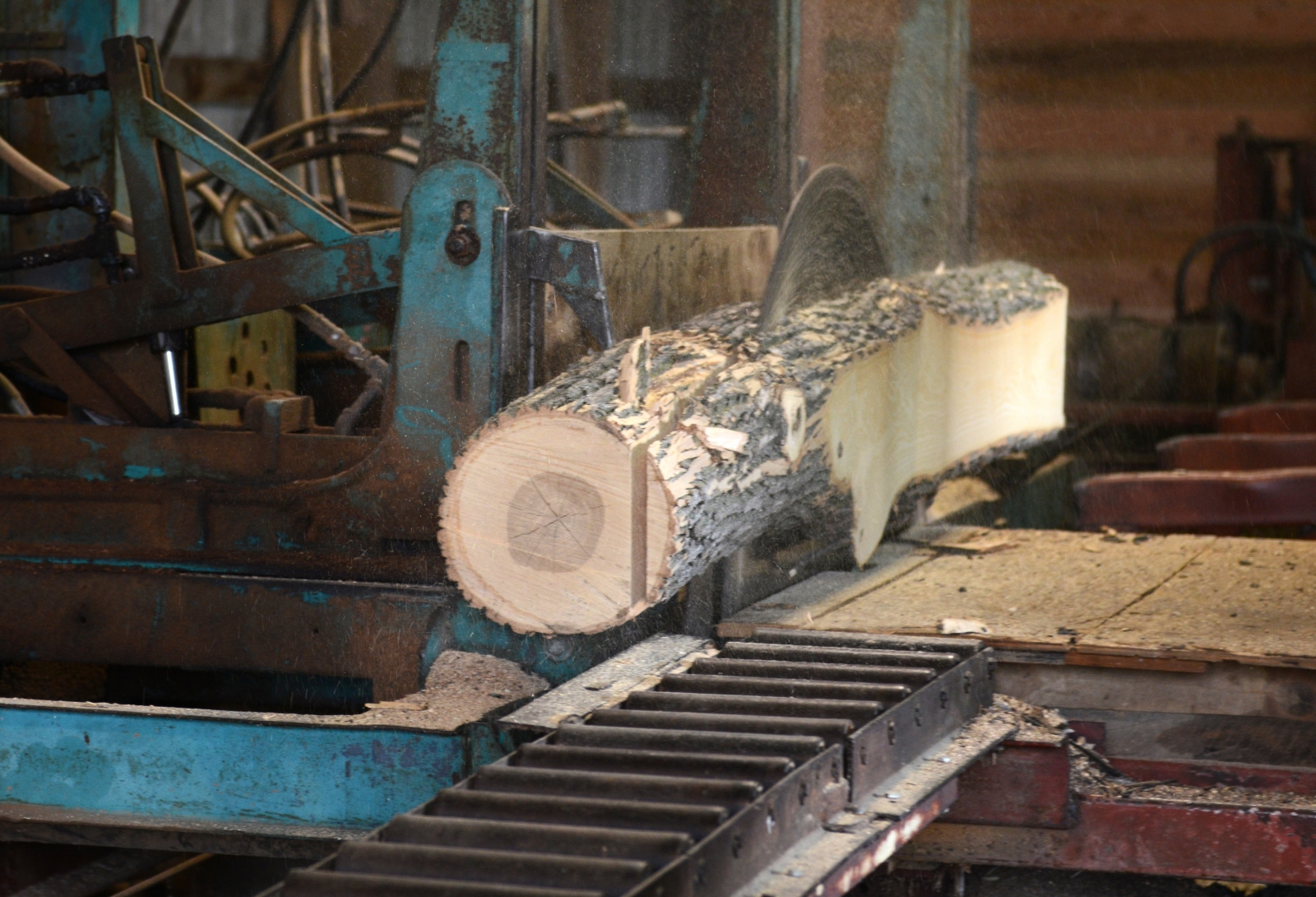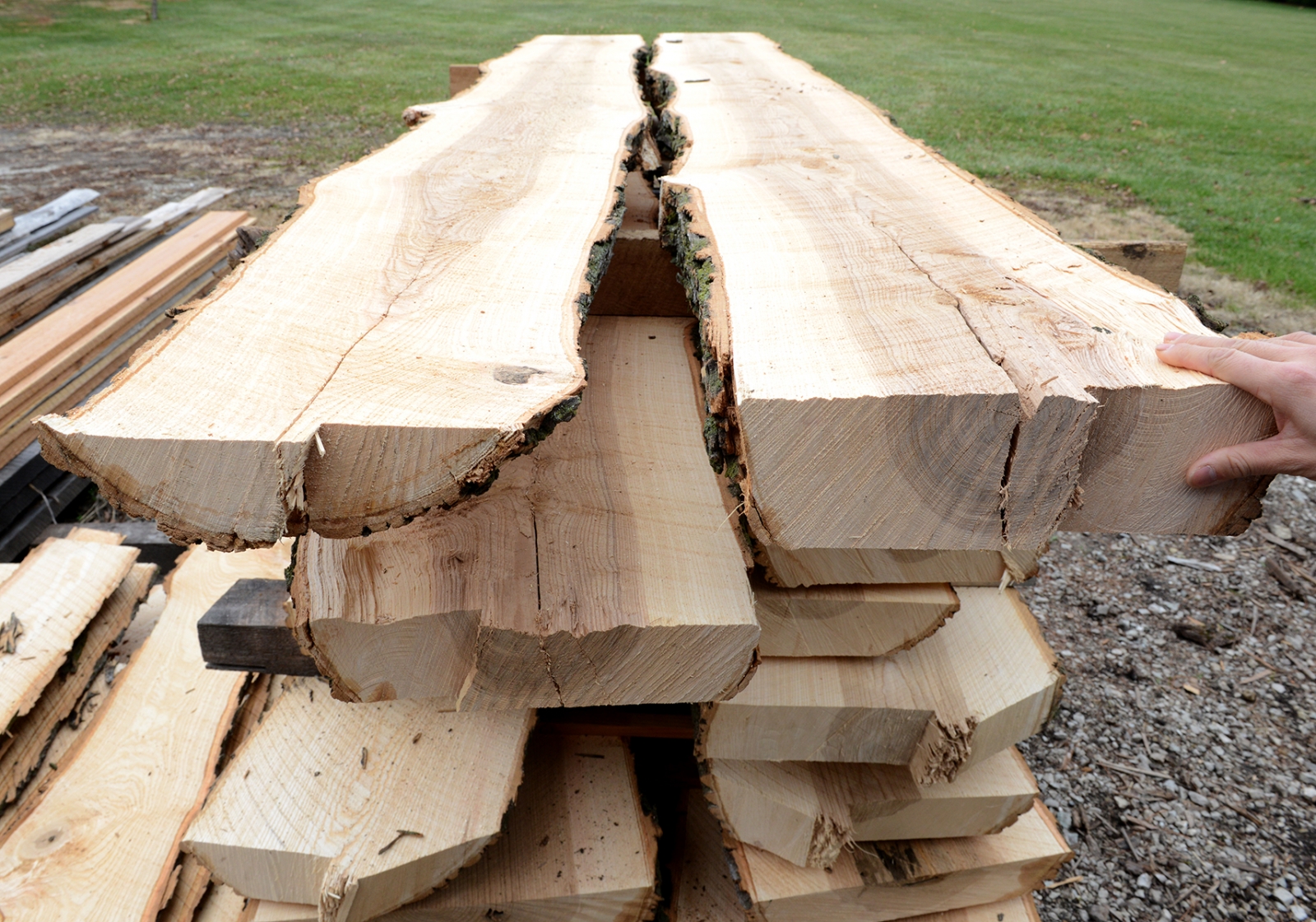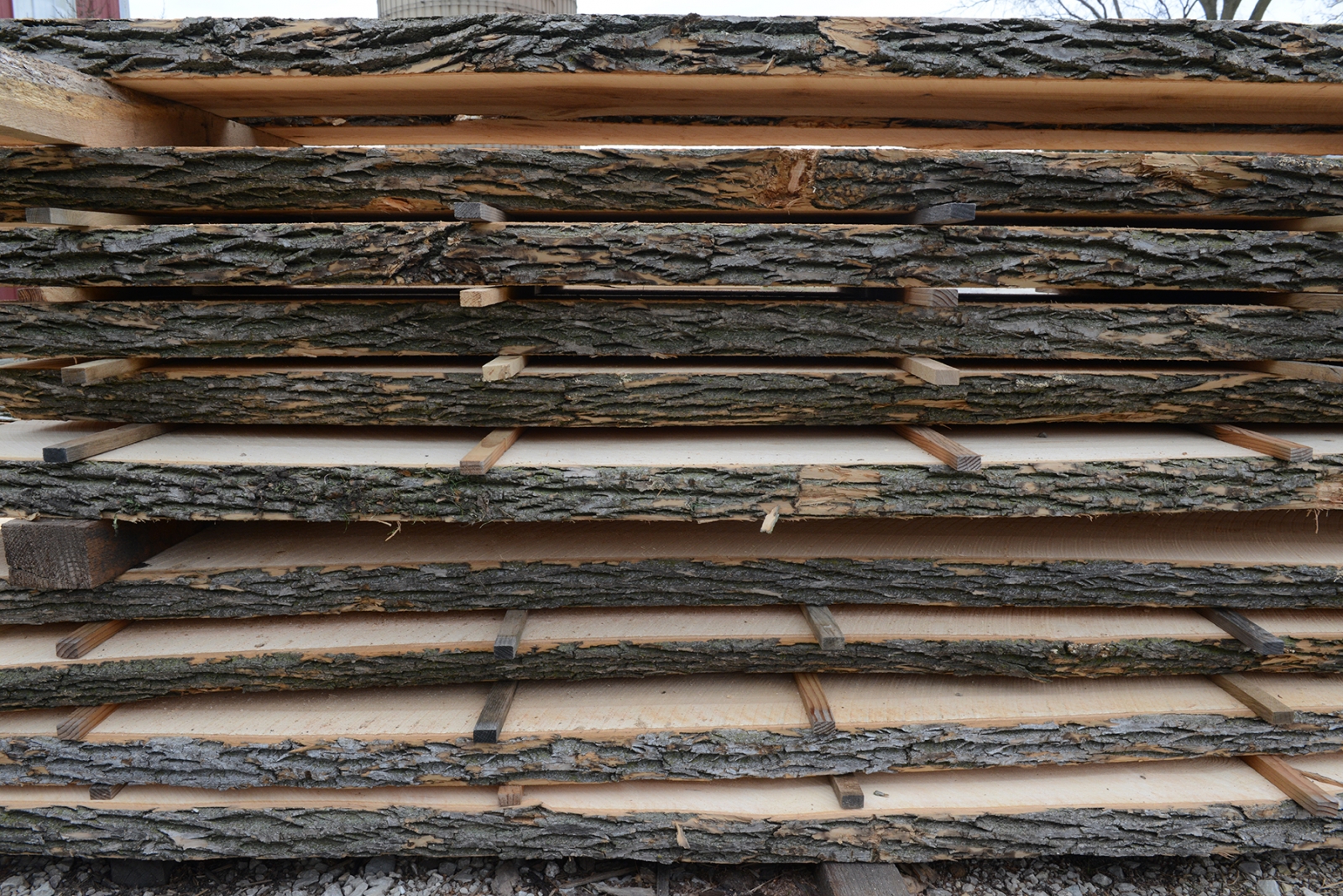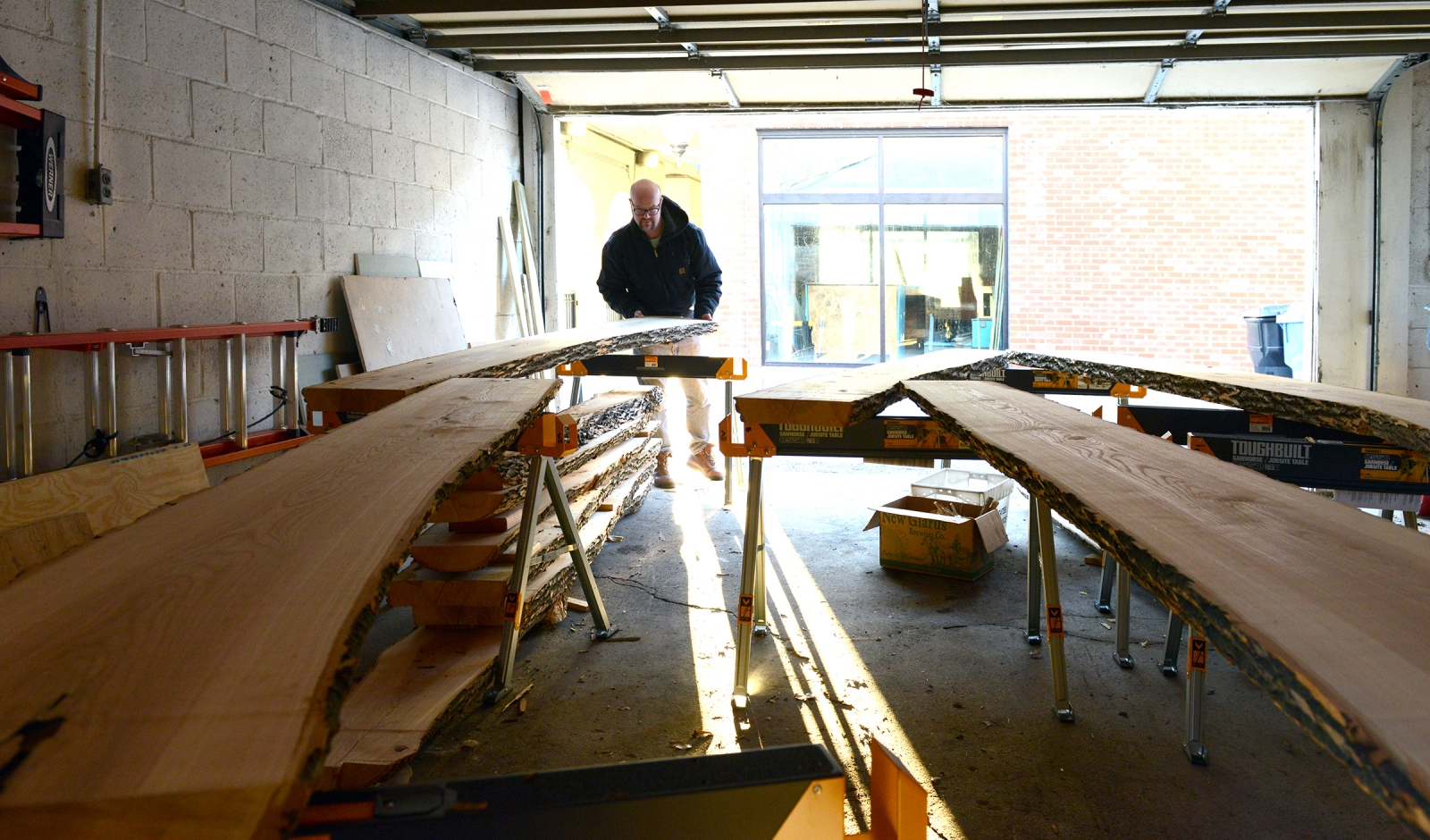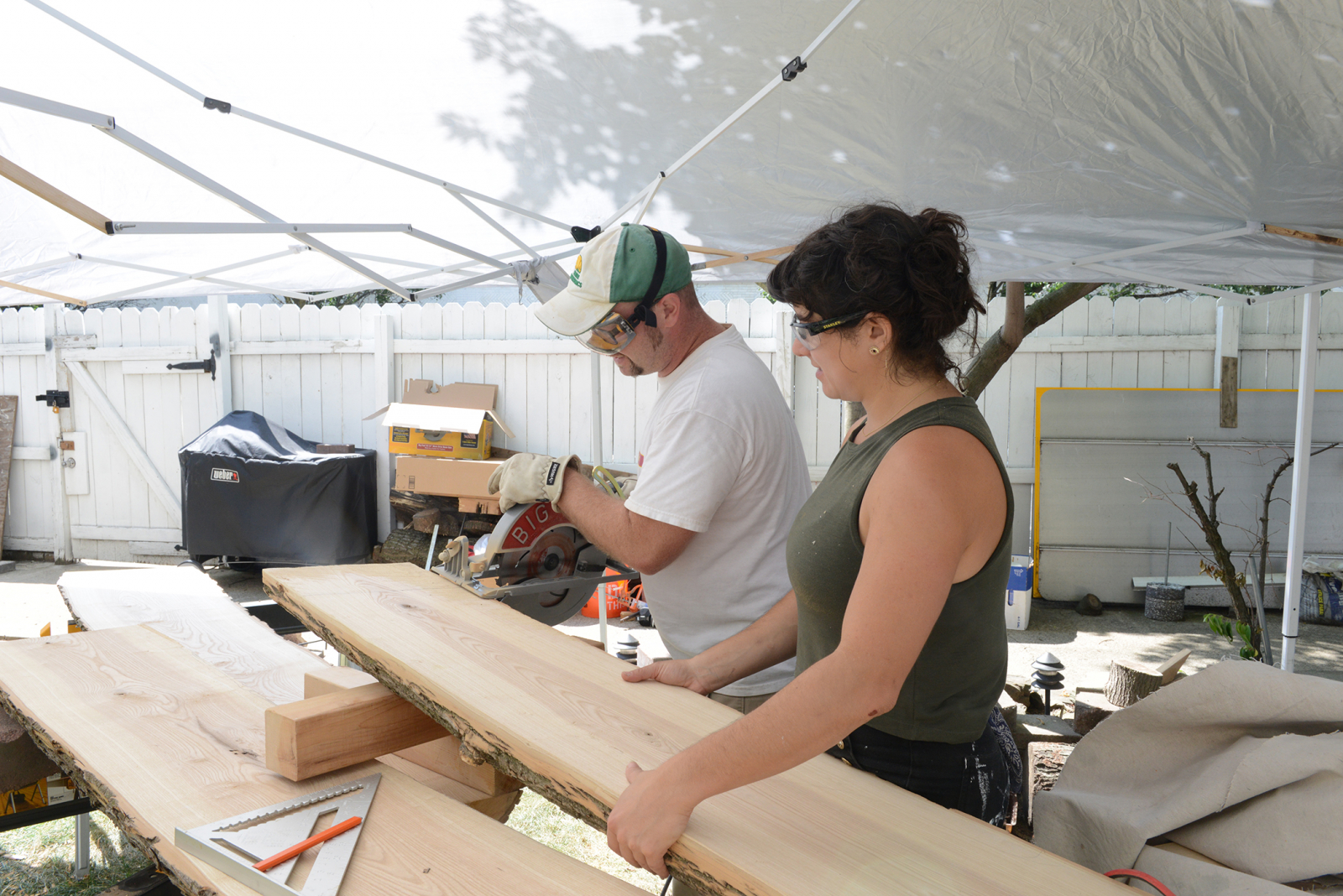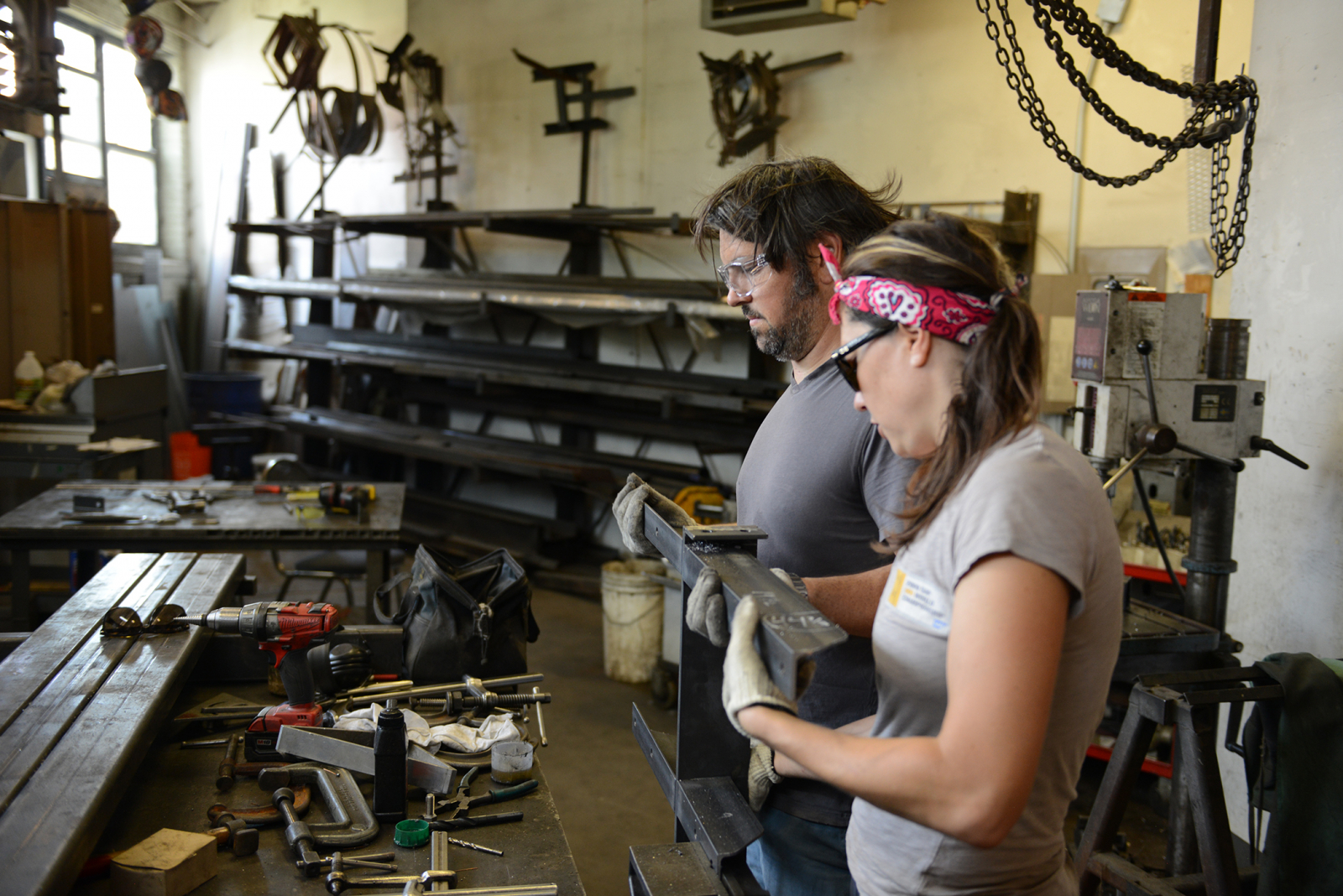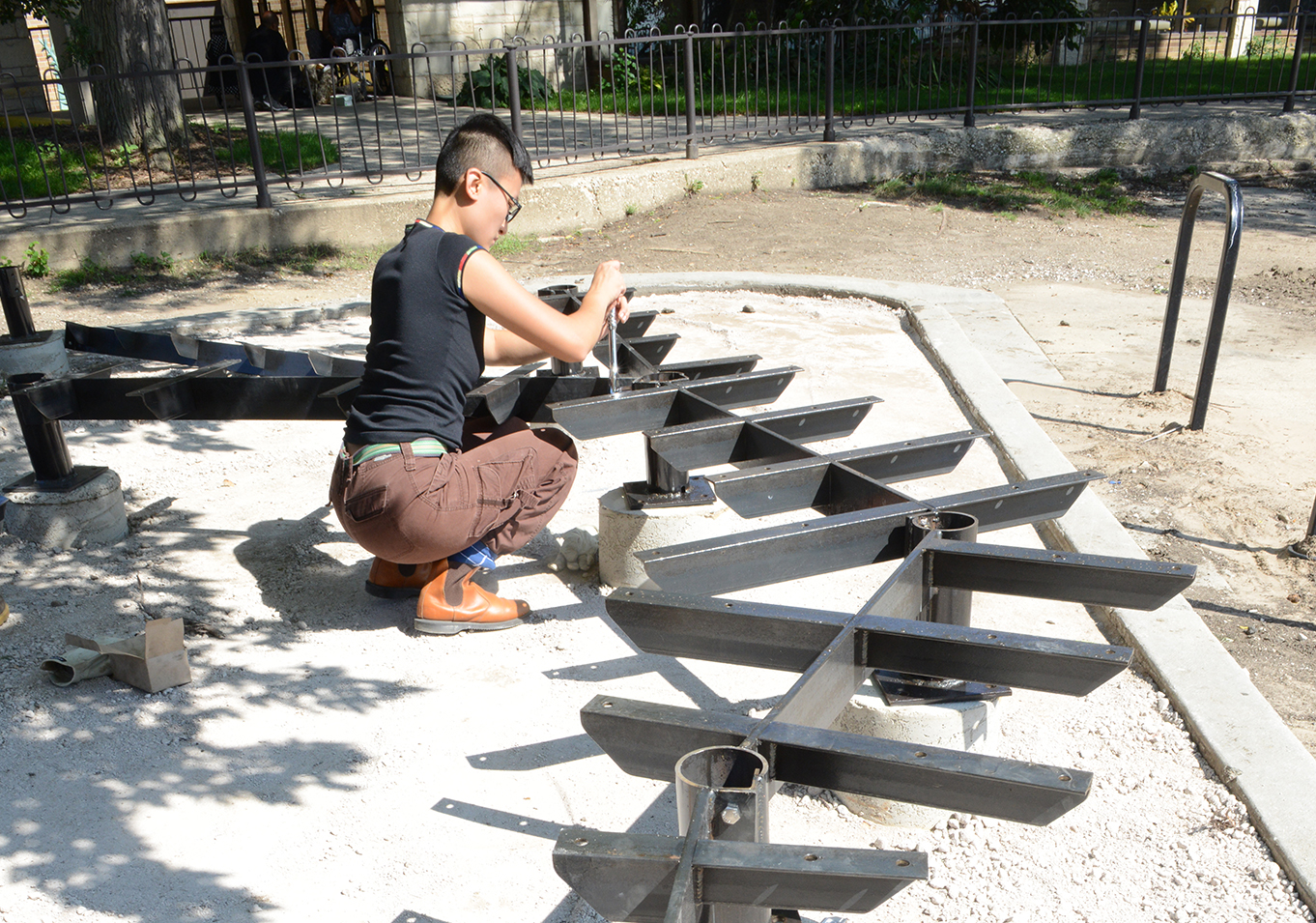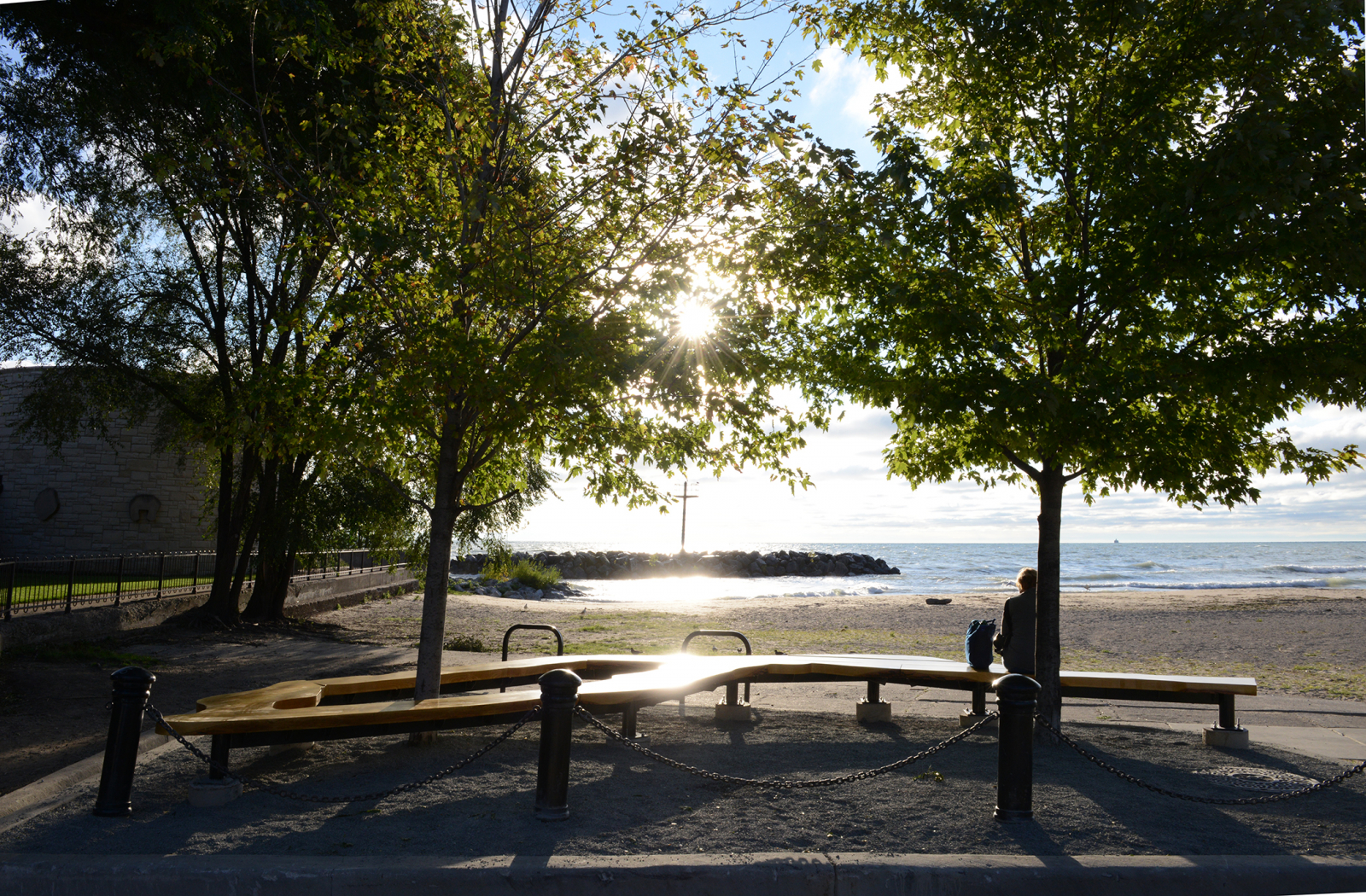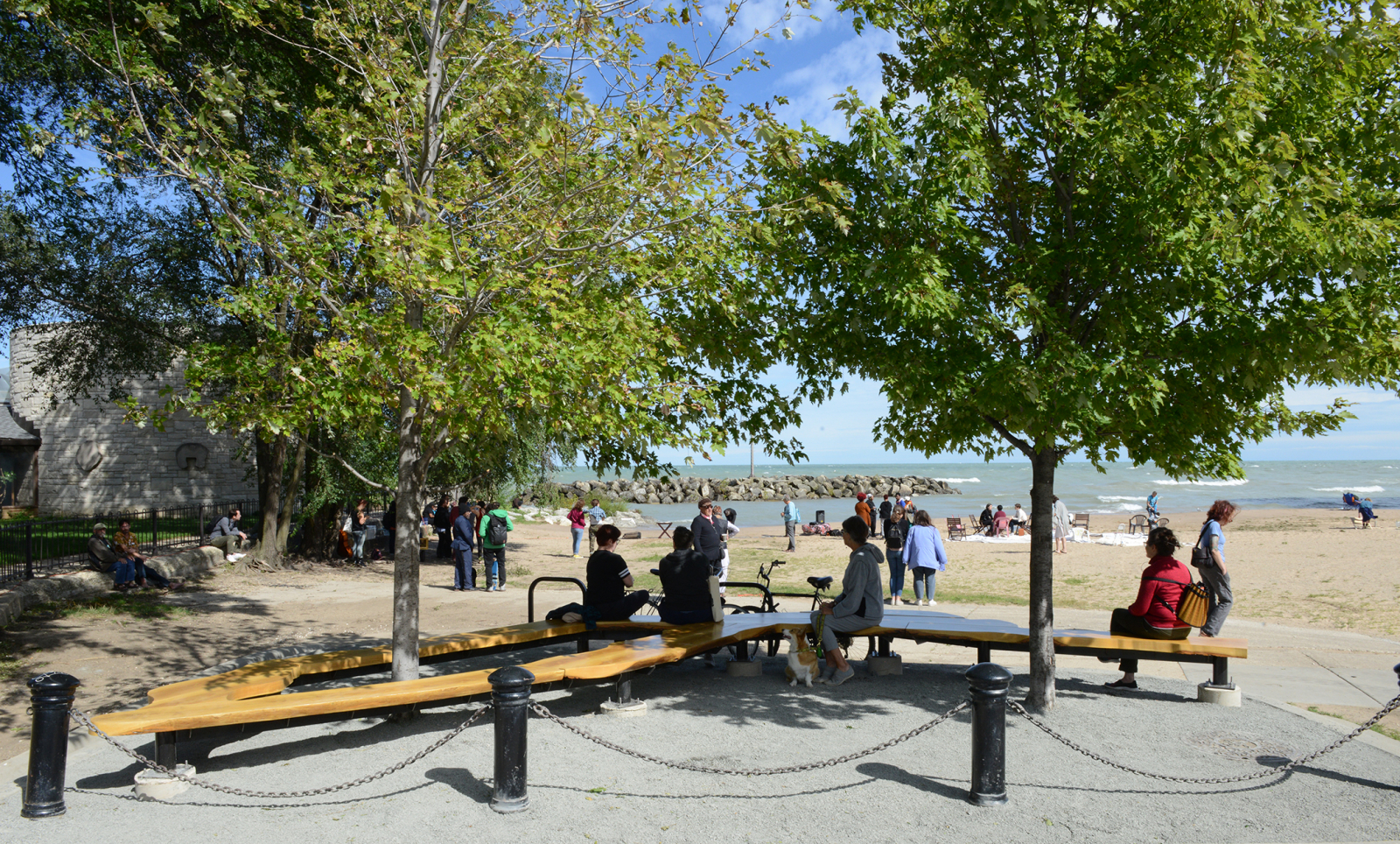Featured Project
Ashland
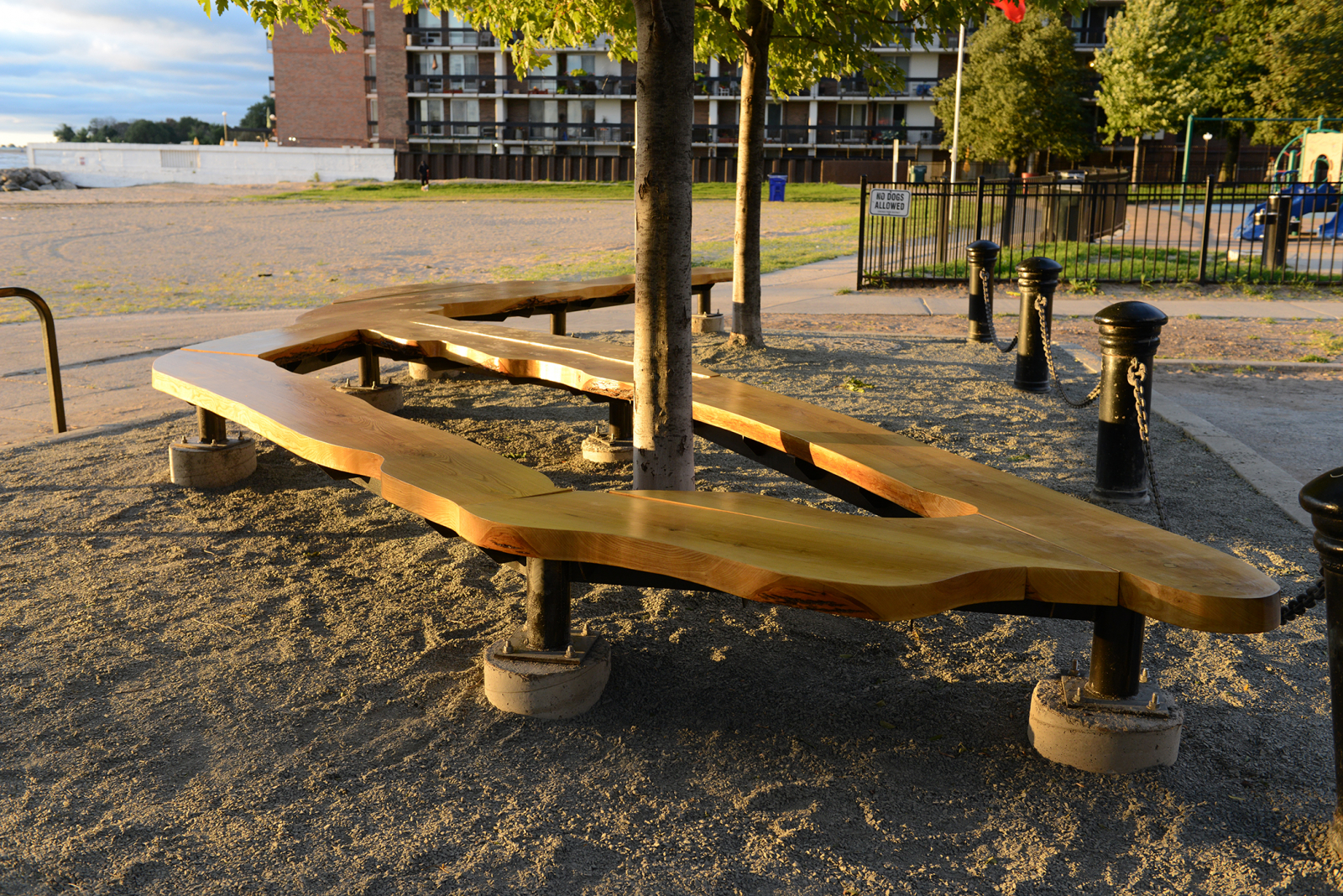
A giant sculptural ribbon of reclaimed ash wood, Ashland is both a sculptural form and a utilitarian piece of urban furniture. Slated to be installed within a traffic island at the eastern end of Thorndale Avenue, where the City meets the Lake, Ashland will allow people to sit, recline, relax, and unwind, taking in the magnificent view of the water and sky upon a piece of sculpture that was created by collaboration between artist and invasive beetle.
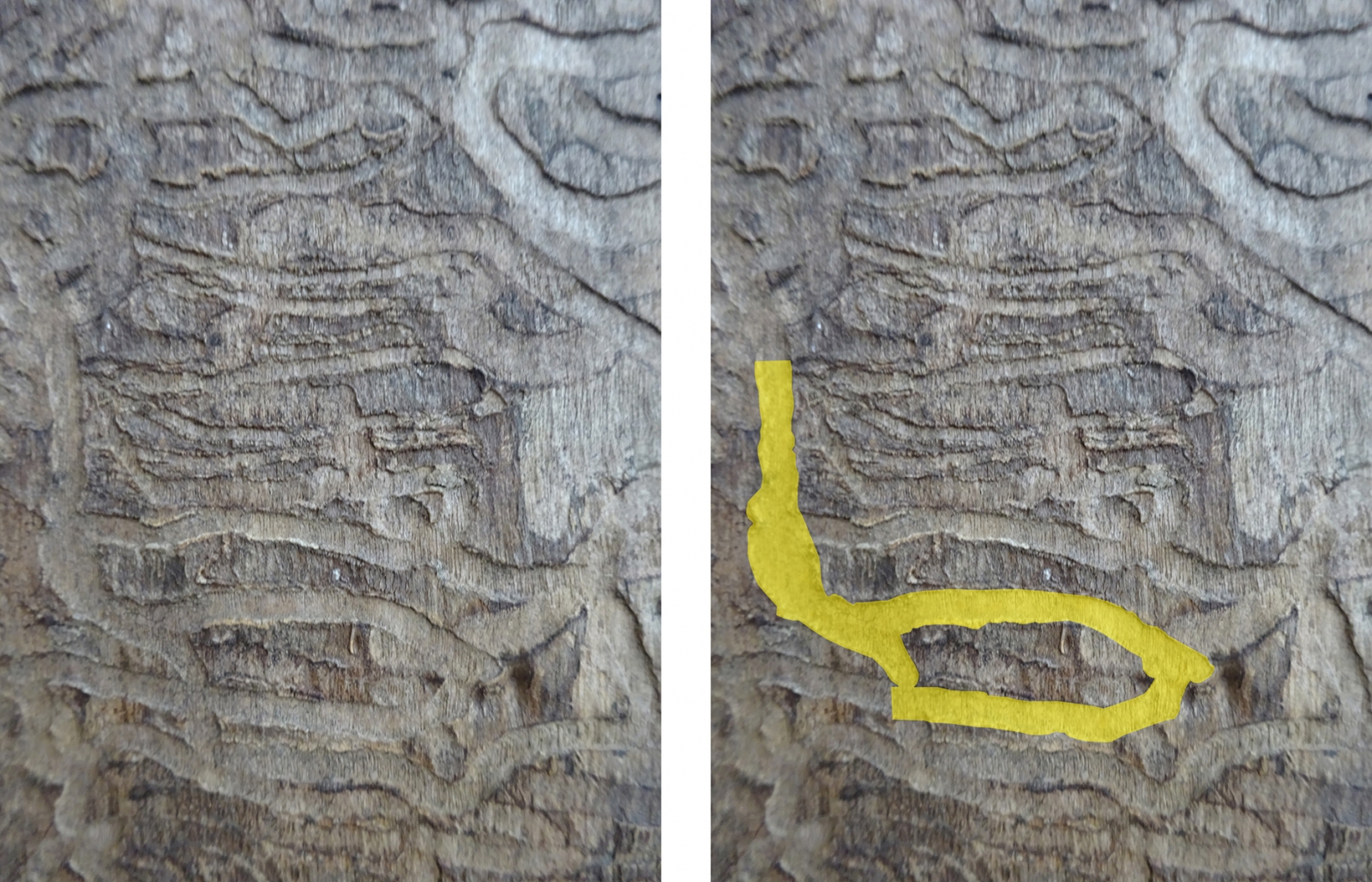
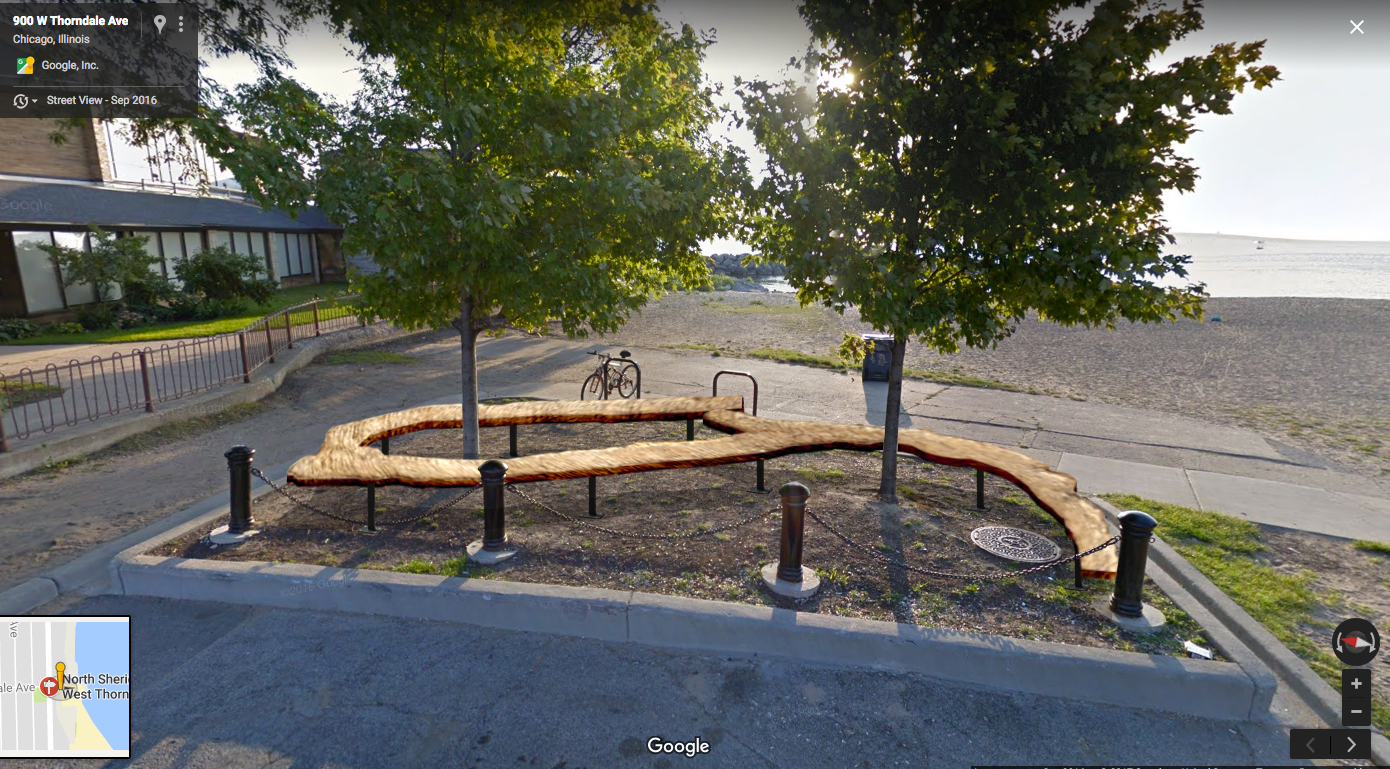
Ashland Concept Rendering, 2017
Constructed from infected ash trees removed from Rutherford Sayre Park on Chicago’s northwest side and donated to this project by the Chicago Park District's Department of Forestry, this sculptural bench utilizes hyper-local wood from trees that have been affected by the Emerald Ash Borer. An infestation of the green beetles in the Midwest has decimated decades-old trees and forests, including in Chicago. When the Borer’s larvae munch their way through the cambium layer between the outer bark and the inner wood, they create looping pathways and tunnels that choke off the tree’s new growth, eventually killing it. The looping shape I have used for the Ashland bench was actually designed by the invasive pest; the trail of a real ash borer is scaled up to the size of the traffic island. This sculpture thus references both the destructive and creative tendencies that are found in nature, and in human nature.
Critic and theorist Walter Benjamin wrote in 1931, “The destructive character does not see anything as being long-lasting; for this very reason it envisions paths everywhere. Everything that exists, it converts into ruins: not because of the ruins themselves, but because of the paths that meander through them. The destructive character does not focus on an ideal image. It has few needs, and the least important of these would be: knowing what would take the place of the thing destroyed.” Ashland takes the place of the thing destroyed. The sculpture acts as a memorial to the very ash trees with which it is constructed, and it also enacts a model for a way forward; a path that imagines how a sculpture can transform ruin into reuse while connect the natural and urban systems we traverse every day.
.jpg)
